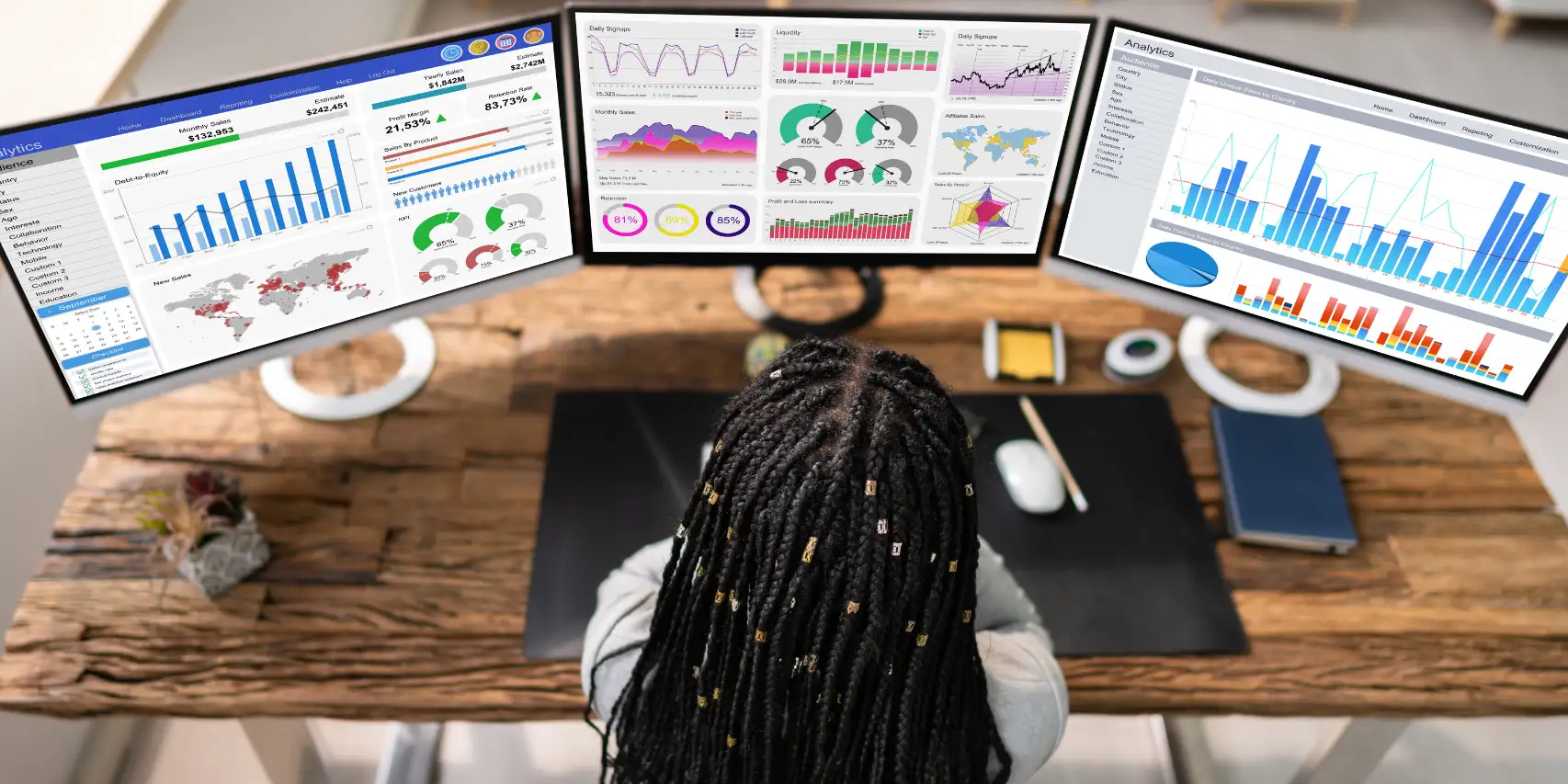In view of the ever-increasing use of BI solutions in your business, we've put together a new fact sheet for B2B professionals wishing to familiarize themselves with the vocabulary of Business Intelligence in 2024.
We have divided the terminologies studied into two parts.
A
- Multipolar analytics: A distributed Big Data model where data is collected, stored and analyzed for placement and use in different parts of the enterprise, rather than centrally.
- Behavioral analysis: combining user intent with data to predict behavior at a later stage.
- Multi-dimensional analysis: Navigation through the various data dimensions, moving from one level of the hierarchy to the next, either visually (drill down to detail, drill up to global), or using calculation formulas.
- Ad hoc query: A request for information sent to the database in response to a specific request. This is the opposite of a predefined query.
- Anonymization: Involves protecting personal data by modifying or removing the links between people and their information in a database, in order to avoid any violation of privacy and confidentiality.
B
- Balanced Scorecard: A performance management tool that links different sources of results data to a page (for example, sales results versus inventory levels).
- Database: A set of data organized for easy retrieval by applications and analysis software.
- Big Data: Big Data is about recording as much data as possible, so that it can be automatically analyzed to establish patterns, trends and interactions.
- Business Intelligence: Process whereby data, often internal, is analyzed to support management decisions.
- The 7 V's of Big Data : The "7 V's" help explain the concept of Big Data. There is no consensus on how many "Vs" should be considered, and this list has been expanded over time. Here are the 7 extended V's of Big Data:
- Volume: Amount of data or combinations of data that cannot be stored in a traditional system.
- Variety: Sets of information from different sources and of different types.
- Speed: Rapid data growth, requiring fast processing.
- Accuracy: Reliability of collected data, essential for its proper use.
- Value: Large quantities of data containing valuable information, harnessing this value effectively is a daily challenge.
- Visualization: Convert large volumes of data into dynamic, well-structured visualization tools.
- Variability: As the Big Data environment is highly variable, it forces predictive models and professionals to be constantly up to date.
- Self-service BI: Offer users software that enables them to create their own reports, browsing through data to retrieve the ones they need. In this case, it is essential to provide them with pre-validated data;
C
- CRM: Strategies and software designed to organize and optimize customer relationships.
- Data cube or OLAP database (On-Line Analytical Processing): Database used to manage the storage of hierarchically organized data, and to store measurement values at the various intersections (e.g. sales in France in 2016, margin in Italy in January 2016, etc.).
D
- Data Quality: A company's ability to ensure that the data in its information system(s) is correct and durable. Data quality is an important issue for companies. It involves providing all users with correct, complete, up-to-date and consistent data.
- Datawarehouse: a database that stores all the company's data, whatever its origin or use. It is therefore an intermediate database, not directly queried by users.
- Datamart: Database storing data for decision-making purposes for users in a given functional area (e.g. HR datamart, Purchasing datamart). Its main source is data from operational systems, enriched with dimensional data (year, quarter, month) and measurements (sales, margin, payroll, etc.).
- Data Visualization (DataViz): Recent term associated with the availability of new data representations, such as heat maps or Mekko graphs.
- Data Storytelling: Storytelling based on data. The audience will remember a story much better than a simple table of figures.
- Data broker: Company that collects personal information about consumers and sells this information to other companies.
- Data cleansing: Process by which incorrect and/or incomplete data is modified or deleted.
- Data point: Distinct element of a graphic or diagram.
- Contextual data: Data structuring linking situational contexts to database elements to obtain business information gathered from recent web activity data (e.g. recording a customer's purchasing preferences in addition to contact details).
- Business intelligence tool: A set of IT solutions providing users with the data and software they need to analyze a company's activity. Anglo-Saxons use the expression Business Intelligence, often abbreviated to BI.
- Dimension: A set of hierarchically organized analysis criteria, commonly referred to as an analysis axis. A common example is the Time dimension, broken down into year, semester, quarter, month and day.


